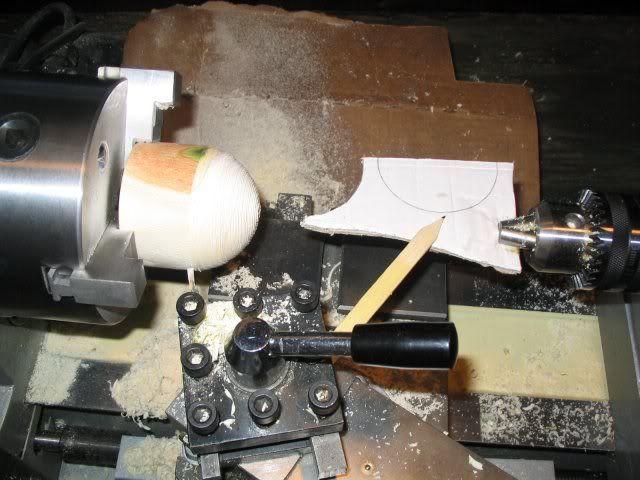I was thinking today,I was asked to turn 8 small table legs, all the same, being principally a woodworker,and I have been for nearly 30 years, I tend to work a lot "by eye", as the tolerances are not so critical as they are in small engines ,it's never the less surprising just how close you can get without measuring!, today these table legs were quite simple, from square to round with a couple of rings, then a long taper (I can't be bothered to take a pic right now!),I turned the round section and then marked the distances with dividers, the diameters I just did by eye,nearly always have done!, when I measured the diameters with the calipers they were all within 10 thou or so!, I have trouble loosing this habit when working with metal!, I was just curious how many of you work by eye and if so ,when do the calipers come out and you start looking at the dials!.....Giles
You are using an out of date browser. It may not display this or other websites correctly.
You should upgrade or use an alternative browser.
You should upgrade or use an alternative browser.
working by eye
- Thread starter gilessim
- Start date

Help Support Home Model Engine Machinist Forum:
This site may earn a commission from merchant affiliate
links, including eBay, Amazon, and others.
Philjoe5
Well-Known Member
- Joined
- Jul 12, 2007
- Messages
- 1,727
- Reaction score
- 321
If I take some time, when I'm installing a vise to the milling machine table I can usually get it to within 0.010". For anything other than perpendicular though, like cutting a taper, or cutting two angles one on either side of a squared off piece I use the machines capabilites or angle vises etc. My eyes definitely cannot be trusted because I know they do not work together to judge perspectives. Last time I had an eye exam I told the doc to forget the "which thing is closer" test. I have no clue!
Cheers,
Phil
Cheers,
Phil
- Joined
- Jul 8, 2007
- Messages
- 628
- Reaction score
- 14
I make a tracer from a popcicle stick and some cardboard.


Tin Falcon
Well-Known Member
- Joined
- Jul 9, 2007
- Messages
- 7,207
- Reaction score
- 789
I have made some interesting parts by eye. I made a set of matching candle stick out of brass casting by eye. One time in the AF sheet metal shop I cut a pair of matching prefect squares without trying. I have also roughed in a few parts and when checking the dimension I found it within a couple of thousands . Of course I have roughed in parts only to find i did not leave enough for a finish cut and had to scrap the part.
Tin
Tin
rake60
Well-Known Member
- Joined
- Jul 8, 2007
- Messages
- 4,756
- Reaction score
- 125
When I'm roughing a part I know a full turn of the compound dial is .050" or .100" off
the diameter.
.050" depth of cut is a comfortable rough cut for my little 9 X 20 lathe.
I know what I'm starting out at and where I'm headed, so I'll back out of the cut, give the
dial a full turn and kick it into feed. When the math in my head says it's getting close I mic
it and put the indicator on.
(You'd be supprised how many times that first mic check is a "Uh Oh a little polishing
will have that finished!")
Rick
the diameter.
.050" depth of cut is a comfortable rough cut for my little 9 X 20 lathe.
I know what I'm starting out at and where I'm headed, so I'll back out of the cut, give the
dial a full turn and kick it into feed. When the math in my head says it's getting close I mic
it and put the indicator on.
(You'd be supprised how many times that first mic check is a "Uh Oh a little polishing
will have that finished!")
Rick
Similar threads
- Replies
- 9
- Views
- 1K



